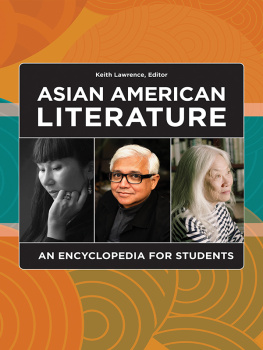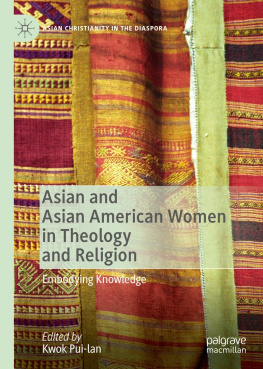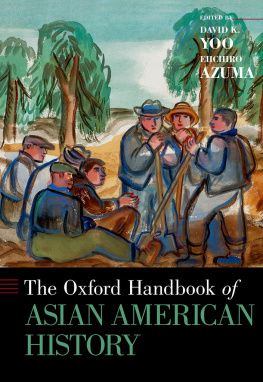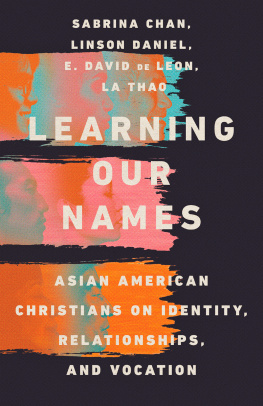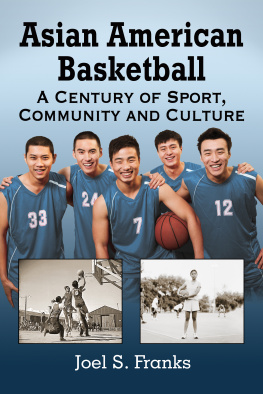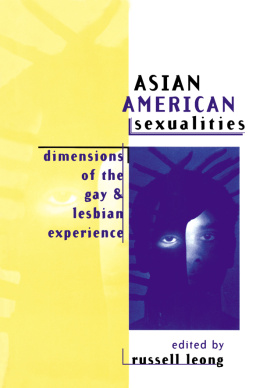THE JACOB LAWRENCE SERIES ON AMERICAN ARTISTS
THE JACOB LAWRENCE SERIES ON AMERICAN ARTISTS
Storm Watch: The Art of Barbara Earl Thomas by Vicki Halper
Elizabeth Catlett: An American Artist in Mexico by Melanie Anne Herzog
Dox Thrash: An African American Master Printmaker Rediscovered by John Ittman
Alfredo Arregun: Patterns of Dreams and Nature / Diseos, Sueos y Naturaleza by Lauro Flores
Yun Gee: Poetry, Writings, Art, Memories edited by Anthony W. Lee
Portraits of a People: Picturing African Americans in the Nineteenth Century by Gwendolyn DuBois Shaw
The Prints of Roger Shimomura: A Catalogue Raisonn, 19682005 by Emily Stamey
Joe Feddersen: Vital Signs by Rebecca J. Dobkins, Barbara Earl Thomas, and Gail Tremblay
Ruben Trejo: Beyond Boundaries / Aztln y ms all edited by Ben Mitchell
William H. Johnson: An American Modern by Richard J. Powell et al.
Queering Contemporary Asian American Art edited by Laura Kina and Jan Christian Bernabe
QUEERING CONTEMPORARY ASIAN AMERICAN ART
EDITED BY
LAURA KINA AND
JAN CHRISTIAN BERNABE

Queering Contemporary Asian American Art was supported by a grant from the Jacob Lawrence Endowment, established through the generosity of Jacob Lawrence, Gwendolyn Knight, and other donors.
This book was also made possible in part by funding from the DePaul University Research Council, the Asian/Pacific/American Institute at New York University, and the Center for Art + Thought.

Copyright 2017 by the University of Washington Press
Printed and bound in the United States of America
Design by Katherine Wong
Composed in Minion Pro, typeface designed by Robert Slimbach
21 20 19 18 17 5 4 3 2 1
All rights reserved. No part of this publication may be reproduced or transmitted in any form or by any means, electronic or mechanical, including photocopy, recording, or any information storage or retrieval system, without permission in writing from the publisher.
University of Washington Press
www.washington.edu/uwpress
Library of Congress Cataloging-in-Publication Data
Names: Kina, Laura, 1973 editor. | Bernabe, Jan Christian, editor.
Title: Queering contemporary Asian American art / edited by Laura Kina and Jan Christian Bernabe.
Description: Seattle : University of Washington Press, 2017. | Includes bibliographical references and index.
Identifiers: LCCN 2016027925 | ISBN 9780295741376 (pbk. : alk. paper)
Subjects: LCSH: Asian American art21st century. | Group identity in art. | Art and societyUnited StatesHistory21st century.
Classification: LCC N6538.A83 Q44 2017 | DDC 701/.03dc23
LC record available at https://lccn.loc.gov/2016027925
Cover image: Niagara by Kim Anno, 2013. Oil on inkjet on aluminum. 36 x 42 in.
Collection of Berkeley Art Museum. Courtesy of the Berkeley Art Museum
The paper used in this publication is acid-free and meets the minimum requirements of American National Standard for Information SciencesPermanence of Paper for Printed Library Materials, ANSI Z39.481984.
In memory of
KARIN HIGA
(June 19, 1966 October 29, 2013)
CONTENTS
by Susette Min
BY JAN CHRISTIAN BERNABE AND LAURA KINA
BY HARROD J SUAREZ
BY JAN CHRISTIAN BERNABE AND LAURA KINA
BY MARIAM B. LAM
BY LAURA KINA
BY JAN CHRISTIAN BERNABE
BY JAN CHRISTIAN BERNABE
BY ALPESH KANTILAL PATEL
BY JAN CHRISTIAN BERNABE
BY JAN CHRISTIAN BERNABE AND LAURA KINA
BY EUN JUNG PARK
BY JAN CHRISTIAN BERNABE AND LAURA KINA
BY LAURA KINA
BY LAURA KINA
BY VALERIE SOE
BY JAN CHRISTIAN BERNABE AND LAURA KINA
BY LAURA KINA
BY KYOO LEE
Plates follow
FOREWORD
In a catalog essay on Ruth Asawas retrospective exhibition, The Sculpture of Ruth Asawa: Contours in the Air, Karin Higa expounds on the wonders of Ruth Asawas ability to manipulate the sensuous and kinetic elements of a piece of wire in the form of a line into a volumetric gray-silver mesh. Contingent on its interaction with light and shadow, Asawas dynamic looped-wire sculptures simultaneously appear iridescently opaque and transparent. Linking this transformative state of her sculptures with Asawas own ability to navigate and negotiate different kinds of spaces and identities, Higa highlights how the artists early life and Japanese American identity were formative in her art making and sensibility as an artist before she attended Black Mountain College. There, Josef Alberss matire courses and pedagogical approach informed her work and validated her cultural heritage, but in turn her art, as Higa points out, exemplified the concept which entailed taking materials and objects out of their conventional contexts in order to create new visual, sensual, and haptic experiences.
Karin would never claim Asawa or her art as queer. But her interdisciplinary approach, which foregrounds the vicissitudes of the artists life circumstances and expands rather than shuts down discussion of Asawas art, serves as a befitting prototype for many of the readings in Queering Contemporary Asian American Art. In her reading of Asawa in Inside and Outside at the Same Time, Karin performs her own kind of matire, simultaneously unraveling the inside and outside of Asawas works by juxtaposing her early history at her parents farm, attendance in progressive schools, and internment experience at the Santa Anita detention facility during World War II with her time at Black Mountain College in order to complicate the trajectory and culmination of her art practice and, in direct relation to this anthology, to underline the ways that bodies matter.
Nonnormative Asian Americans bodies and queer theory matter in Laura Kinas and Jan Christian Bernabes exciting anthology in ways that revitalize the critical capacity and relevance of Asian American art as a means to mediate, negate, and open new fields of meaning. Extending David Engs and Alice Homs pioneering Q&A: Queer in Asian Americawhich foregrounded gender and sexuality as integral categories of analysis and the productive importance of queer studies in the understanding of Asian American history and law, the editors mobilization of recent queer scholarship on temporality and space that unbind time and history from disciplinary and marketplace timelines enable scholarship on Asian American art to be in excess of current conceptual categorical paradigms. Neither methodical nor arbitrary, the anthology is conceived here as a sideways inquiry; a mash-up of queer theory in combination with interdisciplinary conceptsincluding Kandice Chuhs subjectless critique, Victor Bascaras critique of model minority imperialism, Amelia Joness intersubjective contingency, Sarah Ahmeds discussion of will, and Jose Muozs conceptualization of hope as a form of hermeneuticsthat insightfully rearticulates the past-potential future of Asian American art.
On another level, the anthology is in part a tribute to Karin Higa, her commitment to Asian American art, and her innovative thoughts of it as a field of study. Her influence on the field was especially felt in a landmark gathering of scholars at a National Endowment for the Humanities seminar that took place at New York University in the summer of 2012, organized by Margo Machida and Alexander Chang. There, at one of the morning sessions, in her understated no-nonsense way, Karin metaphorically analogized Asian American art scholars as ants, citing the imperative of ants to create and burrow new paths of inquiry, to open up Asian American art as a relevant field in the twenty-first century.
Next page

